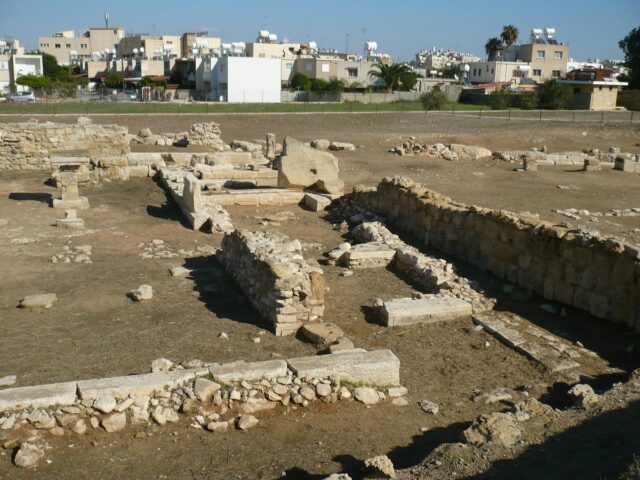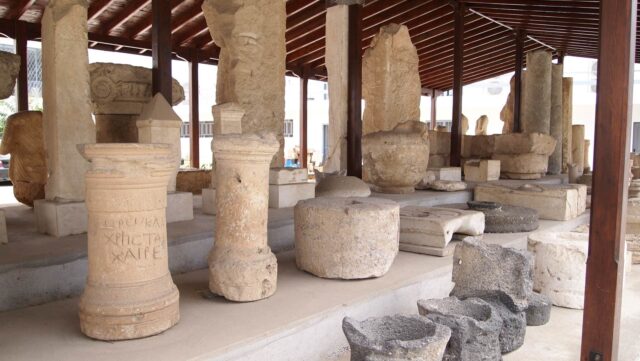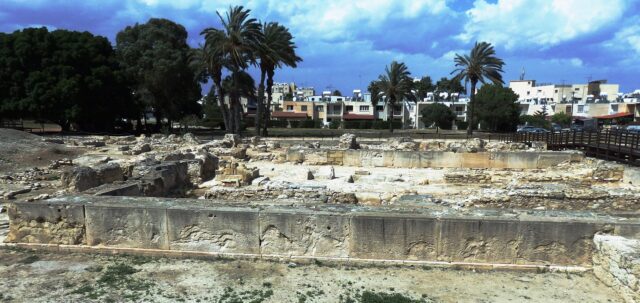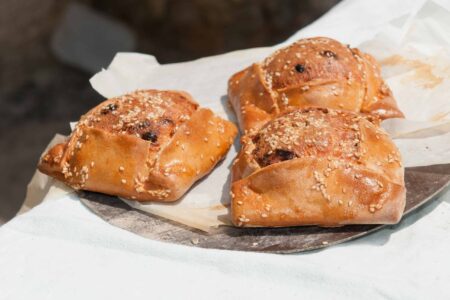Kition is one of the most significant archaeological sites in Cyprus, reflecting the island’s millennia-long history. The ruins of the ancient city, located in the northern part of modern-day Larnaca, allow us to trace the development of civilization from the Bronze Age to the Hellenistic period. This archaeological park is an important testimony to Cyprus’s history as part of the great cultures of the Eastern Mediterranean.

Contents
- 1 The historical significance of Kition
- 2 Opening and exploration of the archaeological park
- 3 Layout and structure of the ancient city
- 4 The Temples of Kition – Sanctuaries of the Ancient Gods
- 5 The period of Hellenism and Roman influence
- 6 The Kition Archaeological Park today
- 7 The symbolic meaning of Kition
- 8 Interesting facts
- 9 How to visit the archeopark
- 10 The importance of Kition in the context of the history of Cyprus
The historical significance of Kition
Ancient Kition was founded in the late second millennium BC, when settlers from mainland Greece and the Eastern Mediterranean arrived in Cyprus. The city arose on the site of an earlier Bronze Age settlement and soon became one of the island’s key centers of trade and metallurgy.
Thanks to its convenient harbor, Kition maintained close ties with the Phoenicians, Egyptians, and Greeks. At various times, it was dominated by the Achaeans, Assyrians, Persians, and Greeks. The city was not only a trading port but also a religious center, where the goddess Astarte and the Greek god Melqart, later identified with Heracles, were worshiped.
Kition reached its peak in the 9th–4th centuries BC, when the Phoenicians from Tyre settled there. They transformed the city into a center of maritime trade, building monumental temples and fortifications. Kition became known for its extensive port system and powerful stone walls.
During the Phoenician period, the city was ruled by kings who were vassals of powerful Eastern powers. One of them, Baalim II, is known from an inscription discovered during excavations. After the conquests of Alexander the Great, Kition became part of the Hellenistic state, while retaining its importance as a trade and maritime hub.
Opening and exploration of the archaeological park
Archaeological excavations at the site of ancient Kition began in the 19th century, and systematic research has been conducted since the mid-20th century under the direction of Cypriot and French archaeologists. The work has uncovered the remains of powerful defensive walls, temple complexes, residential buildings, and harbors.
The main finds are megalithic structures and temples from the Phoenician period, constructed from enormous limestone blocks. The foundations and columns on which the sanctuaries once stood have been preserved. Artifacts found include ceramic vessels, figurines of goddesses, coins, inscriptions in the Phoenician language, and items from maritime trade.
Layout and structure of the ancient city
Kition was meticulously planned. The city occupied an area of approximately 25 hectares and was divided into several functional zones: a religious center, residential quarters, artisan workshops, and a harbor. The main street connected the port with the temples and the central square.
The defensive system included thick stone walls up to 4 meters high, towers, and gates. Fragments of these remain today. Water was supplied by wells and underground canals, some of which archaeologists have been able to reconstruct.
The Temples of Kition – Sanctuaries of the Ancient Gods
The most impressive part of the archaeological complex is the temples of the Phoenician period, built in the 12th–10th–9th centuries BC.
- The main temple of Astarte (the goddess of fertility and love) is a monumental structure in which sacrifices and religious ceremonies were held.
- The Temple of Melqart (Hercules) is dedicated to the god of sailors and protector of the city. Stone altars and cult figurines were found here.
- The Temple of Baal Hammon, revered as the patron of the harvest and the sun.
These temples demonstrate the synthesis of Eastern and Greek religious traditions characteristic of Cyprus, where cultures have crossed paths for centuries.
The period of Hellenism and Roman influence
After 312 BC, Kition gradually lost its political significance, yielding its primacy to Salamis. However, the city continued to exist as a port and trading center until the Roman era. A new harbor arose in its place, around which Larnaca developed.
Many elements of the city’s architecture—columns, house foundations, roads—were reused in the construction of medieval buildings. Thus, ancient Kition became the foundation of the modern city.
The Kition Archaeological Park today
The Kition Archaeological Park is open to visitors year-round and is listed as one of the most important historical sites in Cyprus. The open-air exhibition features fragments of ancient walls, temple ruins, and the remains of residential buildings. The area is equipped with information boards and self-guided tours.
Finds made during the excavations are housed in the Larnaca Archaeological Museum. They include Phoenician inscriptions, jewelry, vessels, and cultural artifacts. Some exhibits are unique and unparalleled in the Eastern Mediterranean.

The symbolic meaning of Kition
For modern Cyprus, Kition is more than just an archaeological site, but a reminder of the island’s ancient roots. It was here that the first forms of urban life, trade, and diplomatic relations emerged.
The city became a symbol of how Cyprus united East and West, creating a unique cultural synthesis.
The name “Kition” has been preserved in the modern coat of arms of Larnaca and in the name of the Diocese of Kition, which emphasizes the continuity of history and spiritual life.
Interesting facts
- According to biblical sources, Kition is mentioned as the birthplace of the philosopher Zeno, the founder of the Stoic school.
- The city’s ancient harbor was used by sailors for over a thousand years until it silted up and was abandoned.
- In Phoenician inscriptions, Kition was called “Kt”, which means “city by the sacred waters”.
- Archaeologists believe that it was here that elements of writing and statehood first appeared in Cyprus.
How to visit the archeopark
The Kition Archaeological Park is located on Leonidas Kio Street, a few minutes’ drive from the center of Larnaca. It can be reached on foot, by car, or by bus. The site features paths, pavilions, and observation decks.
There is a nominal entrance fee. Tours are offered in Greek and English, but information on the displays is also available in Russian. The best time to visit is spring and fall, when temperatures are comfortable for outdoor walks.
The importance of Kition in the context of the history of Cyprus
Kition is a living reminder of Cyprus’s complex history. Here, Eastern and Greek traditions, pagan beliefs and the beginnings of Christianity, early urbanization and maritime trade intertwine. Every excavated wall and every inscription reveals a new chapter of the ancient world that became the foundation of modern Cyprus.

Kition is more than just an archaeological park; it’s a place where you can literally touch the roots of the island’s civilization. Its ruins tell of the flourishing of Phoenician culture, Greek influence, and the beginnings of Larnaca’s urban history.
For Cyprus, Kition is a symbol of cultural longevity and a reminder that beneath its modern streets lives an ancient city that has continued to exist through the centuries.
















